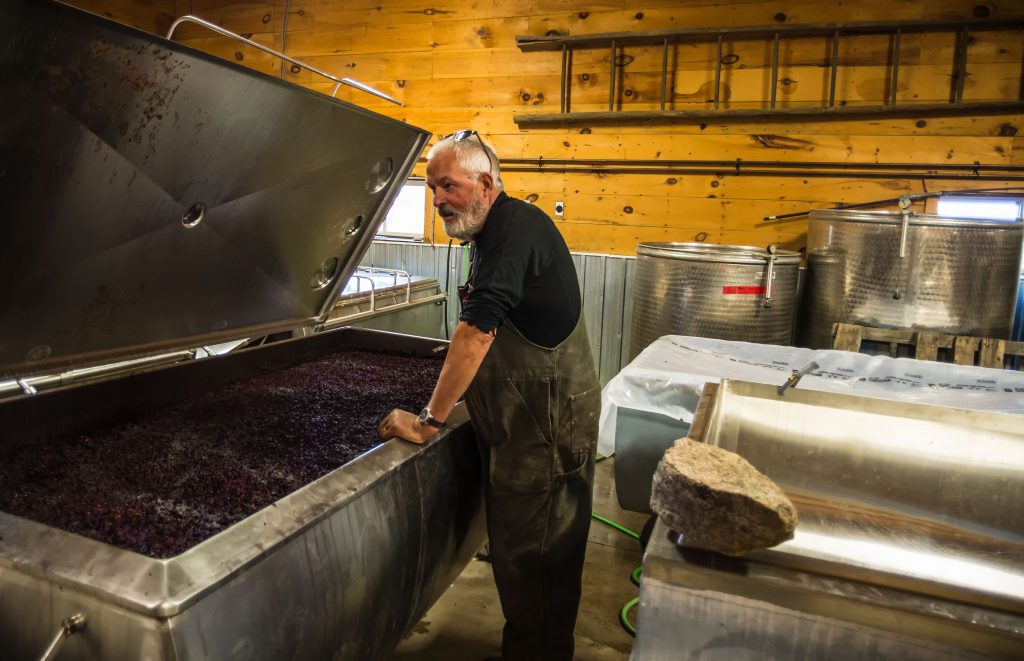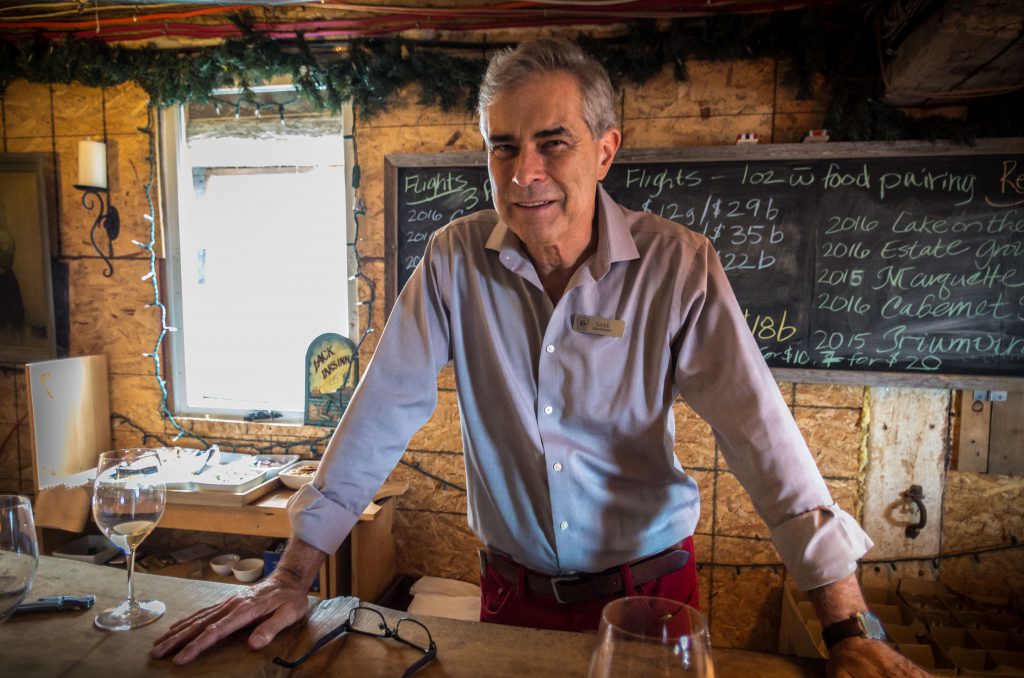Featured in the October 2017 issue of travelalerts.ca
On an uncharacteristically warm weekend for late October, people are pulling all-nighters in Prince Edward County, a peninsula on the north shore of Lake Ontario that urban hipsters have discovered as the perfect rural escape.
But on this weekend, people aren’t losing sleep because they are partying. This is harvest time, and the winemakers, the pickers, the sorters are tired.
“Do you really need a photo when I look so exhausted?” more than one winemaker asks, trying to brush away the look of fatigue.
Although still only producing a small fraction of what Niagara produces in a given year, the County, as it is affectionately known, has gained the well-deserved reputation as an Ontario wine region with some killer cool-climate wines—particularly their Chardonnays and Pinot Noirs.
Wine making is still relatively new to the region. Although Waupoos Estate Winery was the first to open in 2001, the County now boasts more than 40 wineries.
The vines are grown in limestone-rich soils, and in a climate that is both influenced by being close to the lake and the challenges of a harsh winter. Being on the north shore of Lake Ontario and near the Bay of Quinte helps to keep temperatures moderate throughout the year, which is especially beneficial during warm summer months The harshness of cold winters forces many wineries to bury the vines after harvesting the grapes in the fall as a way to insulate them. They then must uncover them in the spring.
These conditions mean that the vines have to struggle more. The cracked limestone bedrock and stony soils create excellent drainage in the spring and absorb water throughout the growing season. This forces the vines to grow deeper in the heat of summer, producing grapes with more concentrated flavours.
As renowned winemaker Norm Hardie explains, “We’re on the edge. We’re on the precipice,” referring to the cold climates and the fact that the County has just enough warm days to allow the grapes to ripen.
Perhaps because of the challenges of both climate and soil, only some County wineries produce wines exclusively from grapes grown in the County. Many rely on a combined yield from both Niagara and the County as a way to not only increase their supply and create a more balanced wine.
At Norman Hardie Winery and Vineyard, we sample some excellent wines. Particular standouts are the Calcaire 2016, a white blend, and their Chardonnay Sans Soufre 2015 (“sans soufre” referring to their being no sulphur added). Although I have historically not liked overly oaky Chardonnays, Norm treats oak like salt: it brings out flavour without being overly dominant.
We then visit Long Dog Vineyard & Winery, where owner James Lahti shows us around his small-scale winery, including his fermentation barn, which he refers to as his “lifeblood building.”

“Can you hand me that paddle?” he asks. I pass him what looks to be a standard canoe paddle. Lahti takes it and then begins to vigorously turn over the purple juice from a large vat of Pinot Noir, an action that he repeats every three hours, including all night, for days on end to prevent the heat rising too high.
“You can’t make Pinot industrially. It’s a demanding woman who needs a lot of attention,” he says. After tasting several of his wines, we buy a bottle of his 2009 “Otto” Riserva Pinot Noir, which has great notes of cherry and vanilla.
The next day, our first winery visit is to Karlo Estates, where the patio—at 11:00 a.m. on a Saturday morning—is almost completely full. This winery is one of my personal favourites. One tasting room looks out on beautiful fields in back, and with the second largest dry stone bridge in North America at the base of the property, you can find many visitors there posing for selfies. The vintner Sherry Karlo and her partner Saxe, whose nametag reads “oenophiliac,” or wine lover, are warm and knowledgeable about the wines. Their wine lounge, a funky Victorian-style parlour in their barn, is open until 9:00 pm on Fridays and Saturdays, drawing industry people from other wineries here for drinks. And they have some standout wines, particularly their 2016 Estate Grown Chardonnay—and two 2016 Pinot Noir, one from grapes grown on their estate, which was earthy and chocolaty, and another from grapes from nearby Lake on the Mountain, which was floral and perfumey.

We then visit The Grange of Prince Edward County, where we have a delicious picnic lunch on their patio that includes rustic bread, cheddar and sheep’s milk cheeses, beef bresaola and butter tarts. As we eat, the staff are busy. One woman rakes grapes into a crusher, while vintner Caroline Granger shovels the stems into a compost.
“There’s no substitute for hand sorting,” says Caroline. “Every harvest has its rhythm. Sometimes workers can pick 500 mg per person per day; other years, 200 is all they get because it’s muddier or harder to find them [the grapes] or the people are slower.“
Our final stop is Rosehall Run where owner and winemaker Dan Sullivan takes us out into the vineyards, pointing out what he says are the County’s only Tempranillo grapes he knows of, and the oldest Gewurztraminer and Sauvignon Blanc grapes in the region. He is a man with passion about his wine.
“When I’m tasting a grape, it’s translucent. That means it’s ready to go. I want some acidity. I want the seeds to be brown and taste a bit nutty to be more or less ready to go.
“This is the movie,” he says, referring to the vineyards around us. That [pointing to the production site] is the editing room.”
Rosehall Run has many award-winning wines to showcase, including a gold medal in the 2016 National Wine Awards of Canada for its 2014 Pinot Noir JCR and a gold from the 2016 International Wine Challenge for its 2013 Chardonnay JCR.
“We try not to take ourselves too seriously. But we take our wine seriously,” says Dan.
Judging from the wines we tasted, County wines are something we should all be taking seriously.
IF YOU GO
Wines: To sample the full range of County wines, you will need to visit the region or purchase them online from the vineyards. Although some wineries have wines available in the LCBO, the choice is often very limited.
Sleeping over: Accommodations in the County include everything from boutique inns to bed and breakfasts, and short or long-term rentals in cottages and guesthouses. We liked staying at The Cribs, which have modern hotel-style suites in Wellington and Picton.
Eating: The Hubb Eatery and Lounge offers excellent, innovative cuisine in a warm and friendly atmosphere. Although currently located at Angeline’s Inn in Bloomfield, husband-and-wife team Laura Borutski (sommelier) and Elliot Reynolds (chef) will be opening in a different location in the County in the New Year: check their Facebook page for updates.
Norman Hardie Winery serves excellent wood-fired pizza from early May to late fall.
